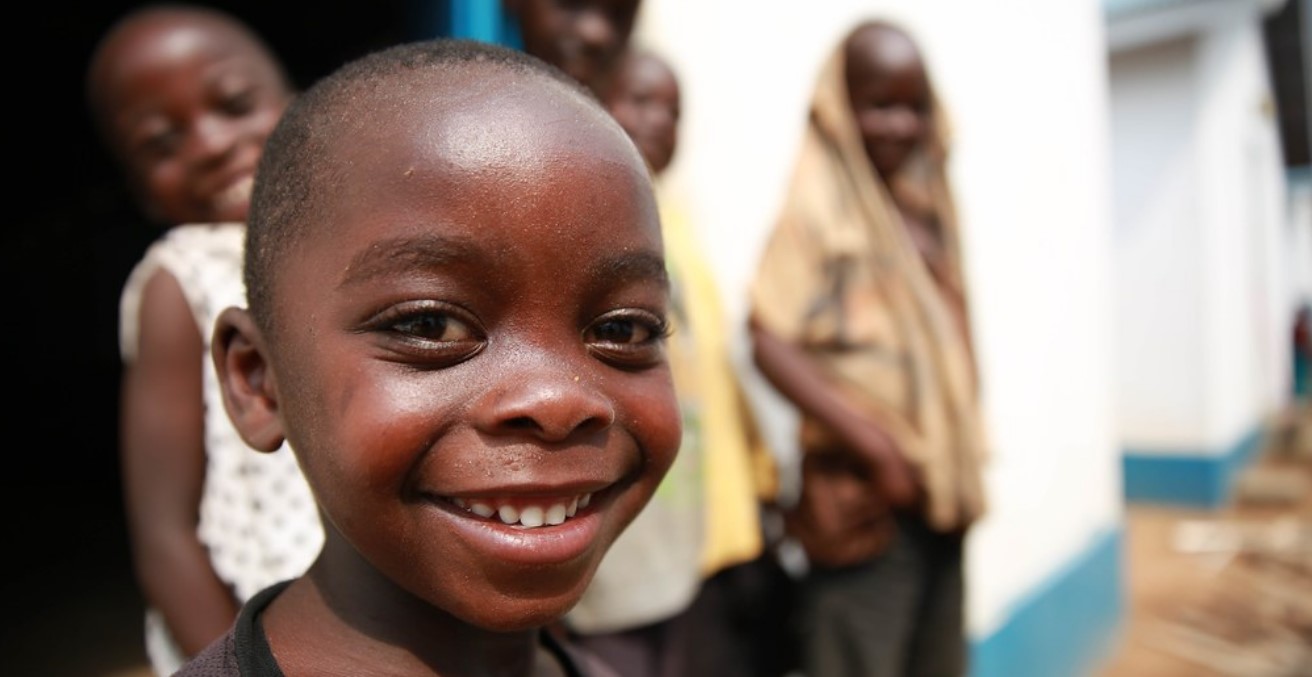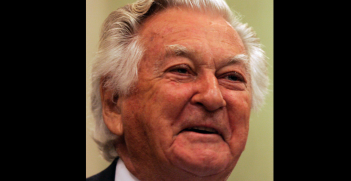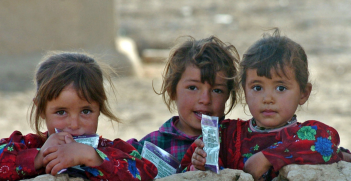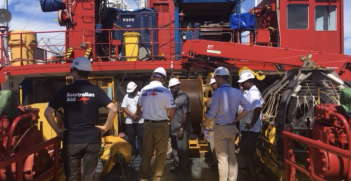The Universal Declaration of Human Rights at 70: Children’s Rights

While the UN Convention on the Rights of the Child (UNCRC) remains the most widely ratified human rights treaty, it is not without its critics. For many, it remains a problematic document whose design promotes as the norm a static and idealised vision of western childhood.
Alongside the 70th anniversary of the Universal Declaration of Human Rights (UDHR) is the 30th anniversary of the General Assembly’s adoption of the United Nations Convention on the Rights of the Child (UNCRC). The Convention now stands as the most ratified UN convention with the US being the only UN member state that has not signed. Children’s rights, apparently, are virtually uncontested. And this is matched by political rhetoric. Across the world, we hear political leaders echo the 1997 sentiments of Nelson Mandela that “the true character of society is revealed in how it treats its children.”
Yet, the past 30 years have seen the rights of children continually marginalised, misunderstood and maligned in liberal and illiberal states alike. The rate of ratification of the UNCRC has not been matched by commitment to its implementation. The anniversaries of the UDHR and the UNCRC provide us with opportunities to reflect upon the state of children’s rights, and consider what Australia might do to promote children’s rights at home and globally.
The state of children’s rights
In his most recent report to the UN Security Council, the UN Secretary-General claimed that there had been a large increase in the reported number of violations of children’s rights in conflict-affected zones. He reported in 2017 that there had been 6,000 verified violations of the rights of children by Government actors, and over 15,000 violations by non-state actors. These included the killing and maiming of children, their recruitment into armed forces, sexual violence and their abduction. The Secretary-General named a further 68 state and non-state groups that had participated in grave violations of children’s rights.
But of course, violations of children’s rights are not isolated to illiberal or conflict-ridden states. There are also widespread violations of children’s rights inside liberal states. In Australia, Canada and the US, Indigenous children, children in care, and children seeking asylum experience multiple breaches of their rights, including detention, and institutional abuse. For example, the 2017 Final Report of the Australian Royal Commission into Institutional Responses to Child Sexual Abuse found that “tens of thousands of children have been sexually abused in many Australian institutions. We will never know the true number. Whatever the number, it is a national tragedy, perpetrated over generations within many of our most trusted institutions.”
The role of the UNCRC
While the UDHR implicitly designates children as beneficiaries of human rights (as human beings) it makes only brief mention of children. Article 25 notes that motherhood and childhood should be afforded special care and assistance and that children should be afforded social protection regardless of whether they are born in or out of wedlock. Furthermore, the rights of parents to choose the kind of education children receive is protected under Article 26. In this sense, the UDHR assumes an adult-centric – and gendered – bias in terms of how rights for children are described and determined.
The UNCRC – arriving some four decades after the UDHR – is an important addition to the human rights regime for two reasons. First, it explicitly lays out rights and duty bearers as they relate specifically to children. This takes into consideration their unique positionality within the human experience, particularly with reference to their age and evolving capacities, and their place within the family and community. Most importantly, it requires the state to always be guided by the best interests of the child in all actions concerning them (Article 3).
Second, while the UNCRC is not the first declaration of children’s rights, it is the first one to attempt to recognise children as active participants in their communities. The 1989 Convention included Article 12 which covers the child’s right to have their views heard and to participate in any decisions affecting them. It further protects their right to freedom of expression (Article 13), freedom of thought, conscience and religion (Article 14) and freedom of association and peaceful assembly (Article 15). While these articles – and Article 12 particularly – remain poorly implemented around the world, they nonetheless provide a stronger foundation than that afforded by the UDHR for the active participation of children in realising their rights.
While the UNCRC remains the most widely ratified human rights treaty, it is not without its critics. For many, it remains a problematic document whose design promotes as the norm a static and idealised vision of western childhood. In this vein Watson argues that, “the existing body of international law adheres to an idealised notion of childhood, which employs an (affluent) Western view of it, as opposed to one that could manage to incorporate an actual portrayal of (poor) children in the South.” Critics argue that despite the inclusion of Article 12, the UNCRC maintains the historical precedent that sees children as ideally separate from political roles and responsibilities. Many argue that this – in fact – acts to ignore or deny children’s agency. For this reason, the contributions of children (both positive and negative) to global political life often go unacknowledged, or are seen as abnormal. Consequently, children are often seen only ever as innocent victims of political life rather than a more nuanced combination of victims, witnesses, by-standers, agents, and actors in global change.
Australia and the global protection of children’s rights
As a current member of the UN Human Rights Council, Australia is in a unique position to promote the rights of children. Australia signed the UNCRC in 1990 and has identified child protection as one of nine priority global themes in its foreign policy, however, it has not been a strong theme of either its candidacy or activities while on the HRC. Of the five pillars and priorities upon which Australia builds its membership, children’s rights are largely absent. It is noted in the commitment to “advancing the right of women and girls” with specific reference to ending violence against women and girls, and is arguably implicit in other pillars, however, it is not explicitly referenced. Indeed, there is barely a mention of children’s rights in the 2017 voluntary pledges that Australia made to the Council and no mention of children as stand-alone rights bearers. While Australia does acknowledge that it is a party to the seven core human rights treaties (of which the UNCRC is one), there is no further commitment to uphold or promote the implementation of the UNCRC and its principles.
This apathy is matched by its activities since being elected to the Council where we find an overall failure to mainstream the rights of children throughout relevant issues. While this represents a number of missed opportunities, there has been some engagement with the issue. Notably, in the 37th HRC session (March 2018), Australia urged the international community to be more accountable for children in humanitarian and conflict-affected situations, highlighting during the High-Level Panel on the Human Rights of Children in Syria its stated commitment of $433 million to supporting the needs of Syrian children.
While its contribution to the HRC highlights Australia’s general – if not especially strong or consistent – commitment to promoting children’s rights around the world, this needs to be juxtaposed to actions and activities within its own jurisdiction. Here, a number of issues have come to the fore over recent years. At the forefront of these issues perhaps is the treatment of children seeking asylum who have been detained in offshore detention facilities. At the end of May 2018, the Australian Human Rights Commission reported that there were 137 children in the off-shore detention facility in Nauru who were still subject to third country processing arrangements, the majority of whom were under the age of 12, and had been on Nauru for at least four years. As a result of public and political pressure – and claims by professionals that the children suffered significant mental, emotional and physical healthcare issues – these children were slowly transferred to the Australian mainland throughout 2018, with the last being reported to have left Nauru in February 2019. A further concern has been the treatment of juvenile offenders in detention facilities on the Australian mainland. The 2017 report of the Royal Commission into the Protection and Detention of Children found that “children and young people were subjected to regular, repeated and distressing mistreatment in detention and there was a failure to follow the procedures and requirements of the law in many instances.” Additionally, the failure to provide systematically or sustainably for the health and well-being of Indigenous children is highlighted annually in the Government’s Closing the Gap reports and the 2019 findings of a coronial inquest into the high rates of child suicide among indigenous populations.
The issue of child, early and forced marriage was also recently raised, with Australia revising its 2013 law that declared forced marriage to be illegal. Since then, the Australian Federal Police had received 232 referrals on the matter. However, the 2013 legislation required those contacting authorities to work with the police, which may often lead to the investigation of the child’s parents. Advocates argued that this was a concern for girls who did not want to see their parents arrested. In 2018, Labour introduced reform that would de-couple government support from the need to work with a police process. The legislative change would also allow protection to be extended to all potential victims of forced marriage, even if they were no longer children.
Finally, like a number of liberal democracies, Australia is faced with issues surrounding the potential return of children under the guardianship – or born to – foreign fighters. The Attorney-General’s Department has confirmed 70 known cases and indicated that it will address each child on a case-by-case basis, according to the risk that they may pose. In each of these issues, Australia has been challenged to uphold its commitment to the “best interests of the child” while navigating other perceived national and international interests.
Moving away from the protection agenda, the November 2018 decision by Australian school children to walk out of their classrooms and stage protests on the lack of government action on climate change brought into focus the right of children to be heard – and taken seriously – in issues affecting them. While reaction to the protests were mixed, the response of the Government was largely patronising and hostile. In response, Prime Minister Scott Morrison stated that: “We don’t support our schools being turned into parliaments. What we want is more learning and less activism in schools.” Such statements are at odds with the fundamental ethic that children can show both agency and rationality in the political sphere, and are entitled to participate in decision-making that affects them.
As the brief examples above demonstrate, the implementation of children’s rights often sits uncomfortably amongst national and international interests. Australia, the United States, the United Kingdom and other liberal democracies currently find themselves struggling to reconcile their commitments to uphold the “best interests of the child” with hard-line policies regarding immigration and asylum claims, the treatment of the children of foreign fighters and other returnees, and the sheer volume of the humanitarian need of children trapped in crises around the world. In light of the widespread abrogation of children’s rights, the 30th anniversary of the UNCRC and the 70th anniversary on the UDHR should act as timely reminders of our obligations to act in the best interests of the child.
Katrina Lee-Koo is an associate professor in international relations at Monash University and deputy director of Monash GPS (Gender, Peace and Security).
This is an extract from a journal article titled “The Universal Declaration of Human Rights at 70: Children’s Rights” and was originally published in the Australian Journal of International Affairs. The original article can be viewed here.





